Posts in Category: Blog
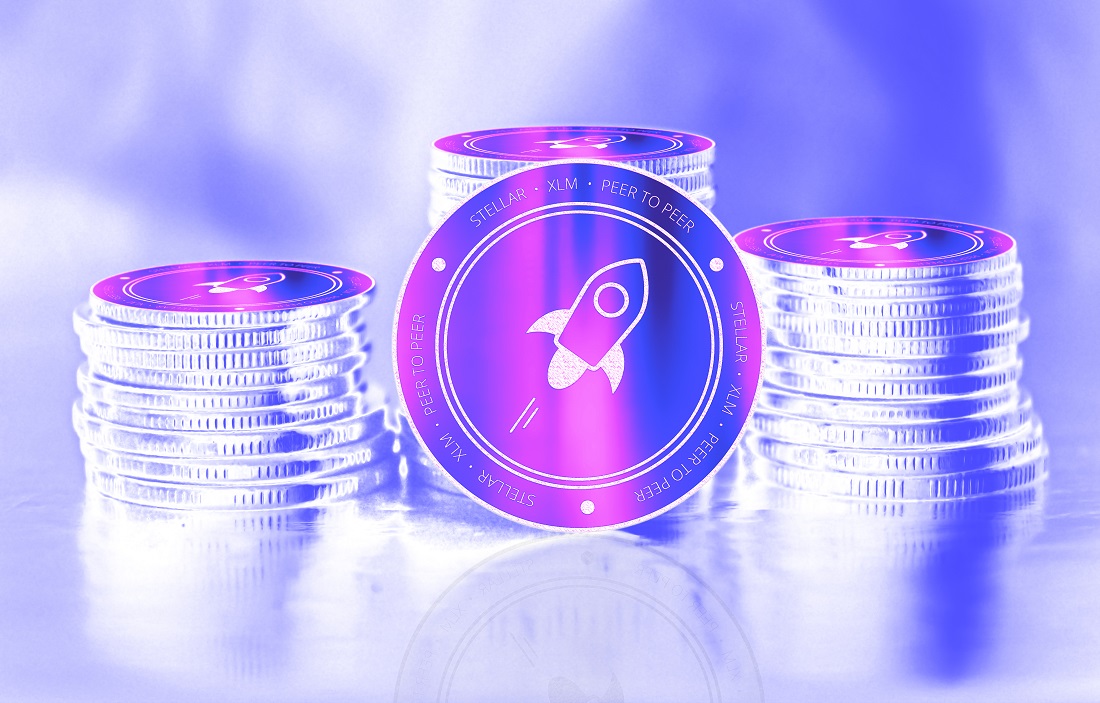
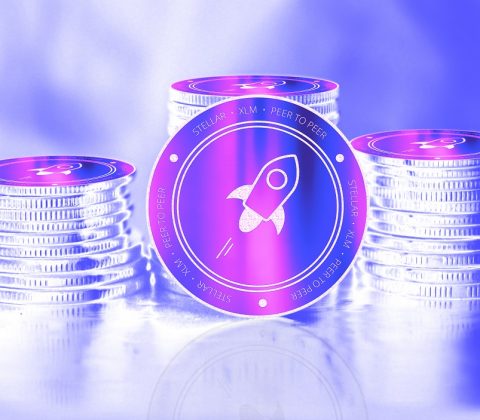
On the Stellar Inflation Debate
The Stellar protocol’s built in inflation mechanism is coming under increasing fire from the community due to what is perceived by some as a lack of transparency or valid justification for the model from the Stellar Development Foundation.
Stellar inflation explained
Stellar’s inflation model currently creates an additional 1% stellar annually. Each Stellar account holder is granted a number of votes proportionate to how many stellars they hold (1 stellar = 1 vote). The votes are cast by setting an ‘inflation destination’ address within the Stellar client. The top 50 Stellar accounts in receipt of the most votes have the inflation pot distributed amongst them.
Problems with the inflation model
The operator of Stellartalk.org who goes by the moniker Hurukan has posted a compilation of issues with the inflation model that have previously been discussed within the community. The post has sparked further debate on the issue, but the Stellar Development Foundation has as yet declined to comment.
The major bone of contention outlined in the forum post is the fact that although the Stellar Development Foundation has made statements to the effect that they hope users ‘will direct the inflation at causes they support or it will enable novel business models’, it is seemingly impossible to follow up on these due to the current inflation model.

Cui Bono
Firstly, as the post rightly points out, most Stellar users keep their stellar in a gateway wallet, which means that their votes are transferred to the jurisdiction of gateways that will set their own inflation destination (probably pointing it at themselves). This will invariably lead to a situation in which only gateways will be able to reach the top 50 votes and average users will have no real say in distribution.
Secondly, the Stellar Development Foundation themselves hold 98 billion stellar. Therefore, they can always win the vote and award themselves a significant proportion of the inflation pot.
Gateways and The Stellar Development Foundation are simply not ‘causes’, nor are they ‘novel business models’ (at least not within the cryptocurrency field). Therefore, there seems to be something of a disconnect between whom the Stellar Development Foundation claims it wishes to see benefit from the inflation system and who will actually benefit in practice.
Is network neutrality important to the foundation?
When inflation was first mooted, it was assumed by many that in order to maintain network neutrality the custodians would not participate. However, it appears that this will not be the case.
What some find even more galling is the client setting of inflation destinations by default to ‘Stellar Development Foundation’ in new accounts. This means that many new users who are uncertain about destination setting will be transferring their vote to the already vote and stellar-rich ‘non-profit’ foundation.
Delaying demurrage?
All of this raises questions like: what is the real reason for inflation? Is it to line the pockets of Stellar Foundation and their friends, is it to support worthy causes, or is it, as many have speculated, to create a form of de facto demurrage to encourage use of the currency?
If it is the latter, then it would seemingly make more sense not to implement inflation until for example 12 months after all of the stellar have been distributed.
One might think that the last thing the Stellar Network needs is more stellar in reserve when there are still 98 billion left to give away. It seems strange that the foundation is creating more when they already have such a gigantic minting cap. Actual distribution will surely hit holders hard enough.
It also seems generally unfair to levy demurrage on stellar holders when there is no current use for stellar. When the currency is used and accepted by many merchants then there might be an argument for demurrage. But to punish holders for not spending something that cannot be spent seems counterproductive and perhaps even antagonistic.
Demurrage works when currencies are currencies. But since stellar has little or no practical use as yet, then it is not a currency but an asset, and assets have one purpose, to be stored. The inflation model as it currently stands seems to degrade even asset status and make stellar something of a liability.
And finally, if the goal is truly to help worthy causes, then we must ask again, why the need to implement inflation until after distribution? Surely it would be more efficacious for Stellar Foundation to give a proportion of the 99 billion Stellar that already exist to worthy causes with voting taking a direct democratic form.

Contradictory messages
Whichever side of the debate you find yourself on there seems to exist contradictory messages within the Stellar vision. This is expressed via calling something a non-profit and creating an unfair system through which you can profit. Or, creating on a demurrage effect that contradicts a commonly held notion recently expressed by Greg Brockman of Stripe that stellar itself will have little use at all other than as a liquidity provider and everyone will be using multicurrency IOUs.
On the whole, confusion and uncertainty are detrimental to financial networks in general, especially those built primarily upon trust.
Stellar Development Foundation should clarify its position
If Stellar Development Foundation are simply following this inflation path in order to fund themselves and major gateways, then it would be better for them to simply admit the fact and say ‘we are allocating ourselves royalties because we are building the network and we are awesome’. In that way they would come across as honest and at least not insult the intelligence of the Stellar community.
But what cannot be denied is that for an organization that claims to be in favour of egalitarianism, their inflation system is certainly not egalitarian. Even if the Stellar Development Foundation were to relinquish their votes then their system would still mean that the rich get richer and the poor get poorer. This is a criticism that has caused many to move away from NXT and we must wonder why the Stellar Development Foundation would be so keen to include the downside of Proof-of-Stake in a new project when they have had the opportunity to do things differently.
Hopefully, The Stellar Development Foundation will move to address these valid community concerns and clarify their position further so that they do not come under even more criticism in future.
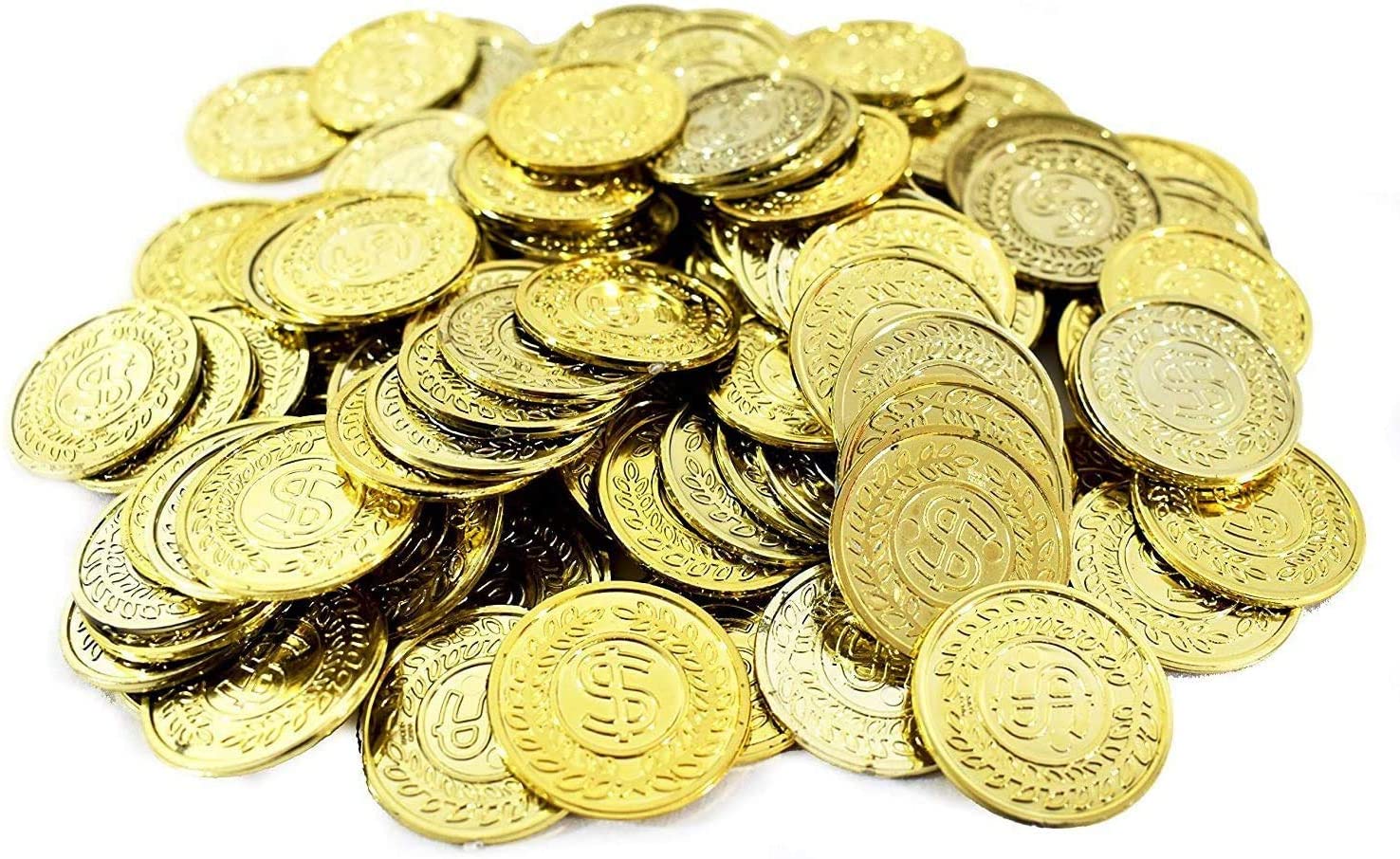

Mistakes To Avoid When You Buy Gold Coins
When people decide to start investing in gold, regardless of the reason, many immediately think to buy gold coins. For some, a late-night sales pitch for some newly minted coin is what got them thinking about gold in the first place. I’m sure you’ve all seen them. The historic imprint celebrating some event or another. The limited time offer. The restricted run. The certificate and fancy storage container. It all sounds very nice except for one small detail they fail to mention: the inflated premium over the spot price of gold.
This introduction to the metal usually leads to a string of ill-fated decisions, ultimately resulting in the investor losing money or at least massively curtailing returns. If that doesn’t sound like wise gold investing to you then we’re in agreement! Our goal is to help you maximize your returns when investing in gold, so let us explain exactly what is wrong with buying gold coins as an investment, which ones are safe to buy, and the superior alternatives.
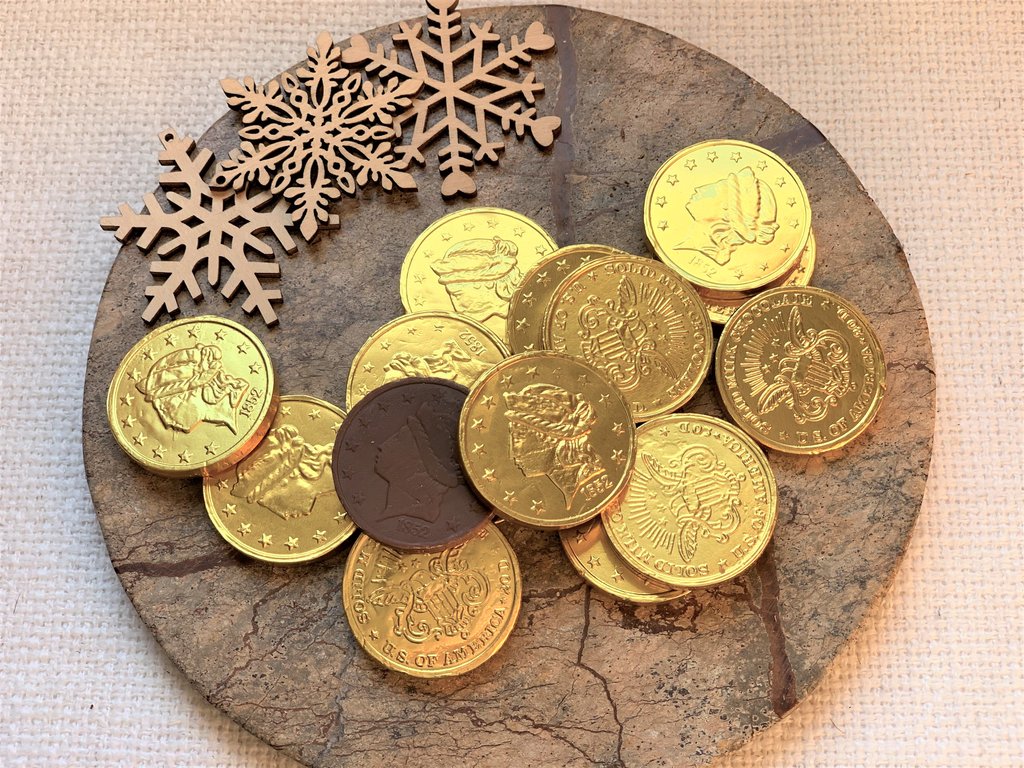
The Differences Between Gold Coins, Gold Rounds, and Gold Medallions
The first thing you should understand before you buy gold coins is that not all of them are created equally. In fact not all gold “coins” are coins at all! In common speech, people refer to anything basically coin-shaped as a coin, but there are actually three distinct products in this category: gold coins, gold rounds, and gold medallions.
The defining characteristic of a gold coin is that it is minted as legal tender for a country. In the case of historic coins, which may no longer be accepted as legal tender anywhere in the world, it is enough that they were legal tender at the time of their creation. A true gold coin will have a face value mark, denominated in the currency of the country of origin. Coins, especially older ones, can also have a significant numismatic value due to their rarity but investing in numismatic value is not the same as investing in gold itself and is best left to coin experts.
Gold rounds are physically no different than gold coins, but weren’t minted as legal tender. This means that rounds will not feature a face value, instead being marked with a weight and purity such as “.999 fine gold, 1/4 troy ounce”). They are also often marked with the originating mint, and sometimes have a decorative design on one side or the other. For all intents and purposes, a gold round is simply a gold bar with a different shape.
Gold medallions are, like rounds, not minted as legal tender. Medallions are essentially a subset of gold rounds that are marketed and distributed as collectibles. These are the the items you see for sale on late night commercials commemorating individuals, events, or historic eras. To add further to the confusion surrounding investing in gold coins, medallions are often minted as replicas of official coins complete with identical markings and face value marks. They are required to be different sizes than the original coin, but this is not always apparent when purchasing online. Unscrupulous sellers will do what they can to conceal the replica status of the medallion while still meeting minimum requirements for legality.
Which Type You Should Use When You Buy Gold Coins
You may not get this impression from some of our summary articles, but it’s true that we aren’t against ALL gold “coins”. True coins do have some advantages worth considering, but unfortunately the common usage of the word coin including rounds and medallions causes confusion for potential investors and leads them to make poor investment choices. If the space can’t be devoted to explaining the particulars of gold coin investment we simply advise individuals to stay away from them because it’s safer overall. We feel it is better to guide someone towards a reliable gold bar than to have them mistakenly buy gold coins at a huge premium that turn out to be commemorative Winston Churchill medallion because they didn’t understand what you meant by “coin”.
The chief benefit of coins is their immediate recognizability. This gives them a tradeability and liquidity advantage over some rounds and bars. In the worst cases, a gold medallion may not even have a weight and fineness mark and must be appraised or melted to be sold! Obviously the transaction costs of this are a significant burden on any return you might get from the sale. We always recommend purchasing rounds and bars from well-known, reputable dealers so we’re not concerned with this particular benefit of coins, but it is there and important to note. The best coins for this recognizablity boost are the American Gold Buffalo, American Gold Eagle, South African Krugerrand, and Canadian Maple Leaf.
The downside of coins is that they are not typically sold directly to investors. Unlike rounds, which can be purchased directly from a private mint, you can’t simply buy gold coins from the U.S. Mint. Coins go through numerous middle men before reaching the investor. Each of these stops increases the premium a little bit, resulting in a significant premium to overcome before you are making returns.
Of the options we’ve discussed here, our recommendation for those investing in gold is to buy gold rounds. As anyone familiar with active stock trading can tell you, transaction costs can devastate your returns and the transaction costs for coins are simply higher than that of rounds. If you purchase properly marked rounds from a well known and trusted source, there is only a small difference in liquidity that we don’t believe is worth the premiums you pay for buying true coins. If maximum liquidity for an emergency still concerns you, you may want to hold a small number of bullion gold coins and keep the rest of your small-weight investment in rounds or bars from private mints.
To summarize, here is a short list of tips to keep in mind when you buy gold coins:
The Do’s and Don’ts of Investing in Gold Coins, Rounds, and Medallions
DON’T buy gold medallions. Period. DON’T pay a premium when you buy gold coins unless you’re more interested in liquidity than maximum returns. If you are buying gold coins, DO only buy the most common bullion coins (such as the American Gold Buffalo) to get the largest liquidity benefit. DO buy gold rounds that are properly marked and from a well known, trusted mint.

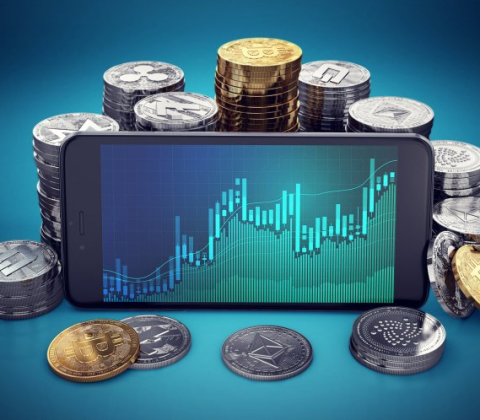
Agriculture Contracts On A Digital Currency Platform?
Digital currencies are known for their cutting edge technologies and innovations to the current financial system. But, what happens when you mix a digital currency with an ancient industry like agriculture? You get an interesting and possibly a very profitable vehicle. A few months ago Nofiatcoin (XNF) launched its agriculture contracts on XNFTrading.com. The contracts offer a 20% return on investment, a nice percentage compared to what most financial vehicles offer now days.
Why Agriculture? As it turns out, agriculture investments offer many benefits unfamiliar to the typical investor:
Value is driven by demand not by financial markets. There is no need to worry about market volatility.
Demand continues to increase, as world population continues to grow.
Production of annual/seasonal income.
Hedged against inflation like most digital currencies.
Reduced risk on investment as many governments have established laws to “secure” revenue.
Let’s go over the current and future agriculture offerings on XNFTrading.com
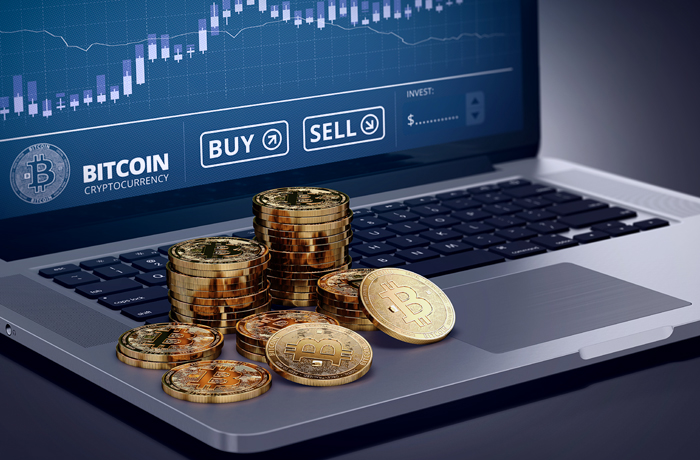
Rice
Rice is a carbohydrate-heavy crop originating in Asia that has been cultivated since ancient times. It is one of the world’s top three staple foods. A significant proportion of the world’s population relies upon daily supplies of rice to avoid starvation.
Rice is undoubtedly a profitable crop to farm and grows best in tropical to sub-tropical climes. Successful rice growing nations tend to form a band running above the equator, straddling the Caribbean and Iberia then across to India and China.
The two biggest rice producers are China and India, but they are also its biggest consumers and therefore weak exporters. Perhaps surprisingly, Vietnam and Thailand are relatively low producers of rice but they are among its biggest exporters. The United States is also a large exporter of rice, but consumption and production are relatively low. The fact that some low producers of rice are among the biggest exporters suggests that demand in Asia is not being significantly met.
China and India together account for almost half of the world’s population and their growing influence and development suggests that their demand for rice will continue to grow. This is reflected by the recent reduction of rice exports from China and booming prices. The commodity has already doubled in value over the last 4 years due to rising fertilizer costs and low Asian yields caused by climatological issues. Asia needs its dwindling rice stocks for its own people and we can likely expect prices across the rest of the world to increase further.
Additionally, global rice stocks are at a current low due to a bull run on other staple foods such as wheat. This has led to some rice farmers opting to plant wheat instead and may create a massive price spike if stocks continue to decline.
Tomatoes
Tomatoes are the second most important vegetable crop next to potato. Tomatoes prices have followed in the footsteps of many other food stock commodities such as wheat and corn for many of the same reasons: increasing prices for energy, farming chemicals, water, and labor have all contributed.
Presently, the world production of tomato is about 100 million tons fresh fruit produced on 3.7 million hectares. Tomato production has been reported for 144 countries (FAOSTAT Database, 2004), the major country being China in both hectares of harvested production (1,255,100 hectares) and weight of fruit produced (30,102,040 Mt). The two leading countries in fruit yield per hectare are the Netherlands (4,961,539 Hg/ha) and Belgium (4,166,667 (Hg/ha) (FAOSTAT Datebase, 2004). The top five leading fruit-producing countries are the United States, China, Turkey, Italy, and India.
Peppers
Peppers have remained one of the most promising non-traditional export crops as it can be used in many different ways, however it is mainly used fresh in cooking as a spice and in the manufacture of sauces and seasoning.
In the last years, demand for peppers and pepper-based products has increased significantly around the world. The non-pungent form, Bell pepper, is widely used as a green vegetable while Hot or Chili pepper is one of the best-selling condiments.
International Pepper Community (IPC) figures showed that global pepper consumption grew at an average of 4.8% per annum during the 2001-2013 period compared with a mere 0.3% increase in average yearly production.
Following a five-year bull run as the world’s annual consumption of the spice continues to outpace production, domestic and global average monthly pepper prices have soared to their fresh historical highs.
Passionfruit
Passionfruit is a non-essential food and therefore considered a luxury commodity mainly consumed for its taste. As such, the market for passionfruit is more volatile than the rice market but the potential for profits can be greater.
International prices fluctuate wildly during the course of a year depending upon yield, quality and freshness of the harvest. The market can easily move between $17 and $90 per crate throughout the growing season. In September and November when little fruit is harvested the price tends to be at its highest. It dips during July and August when harvesting is at its peak and a great deal of fruit becomes available.
The biggest producers of passionfruit are the South American nations with Colombia and Brazil topping the list. However, neither of these countries can keep up with internal demand and export very little. The US market for fresh passionfruit is weak outside of the south-western states. However, in Western Europe, Asia and Australia the fruit is more popular and supermarkets desire regular supplies of fresh fruit. Because there is a global shortage of passionfruit, this demand leads to bidding wars between major supermarket representatives and an incredibly competitive market.
Passionfruit is generally considered a profitable crop to farm. The expectation is that it will become more so due to a rising middle-class in the BRIC countries increasing demand on stocks that are already low. The Kenyan government has recently announced plans to streamline its passionfruit production to capitalize on potential future interest in the crop.
Plantain
Despite the popular belief that the fruit is South American, both the plantain and related banana originate in South-East Asia. However, they are grown heavily in the southern Americas because they thrive in tropical humidity.
The plantain is the world’s tenth most important staple food. It is a good source of carbohydrate, fibre and vitamins. The plantain fruits year-round which has led to daily consumption in South America and Africa where demands are extremely high.
Following initial investment, plantations are extremely rewarding in terms of yield. Like banana trees, plantain ‘trees’ aren’t actually trees at all. They are giant herbs, and like herbs are extremely prolific germinators. The mother plant will not only flower and give out plantains all year but will also produce plantain ‘pups’ which are young plants that soon turn into producing mothers.
The plantain market is strong and represents another situation where demand outstrips supply. In Africa the price of a bunch of plantains has tripled since 2011 and governments there have expressed concern that if global supplies are not increased to meet demand there may be starvation and rioting.
Goats
The goat is a livestock commodity with several important uses for humanity. They have been farmed in the middle-east since the dawn of civilization and the tradition has spread worldwide. Along with sheep, goats have cultural importance to many peoples and represent the quintessential animal husbandry tradition. The family goat remains a good source of income for many in developing countries to this day.
They are hardy, intelligent and aggressive animals that prefer mountainous regions but thrive almost anywhere, either alone or in flocks. They can eat practically anything and as such are often used to clear coarse scrub that other animals cannot eat; this increases their rural value as biological ‘lawnmowers’ who clear land in preparation for crops. This hardiness makes them easy to keep and a rewarding livestock investment. The goat lives for twenty years on average and reproduces at the rate of two kids per year. An initial investment in four goats (for genetic reasons) should create a sizable flock that grows exponentially during their lifespan.
Goats are valuable either living or dead; they are prized for their meat, milk, manure and their hides. Each of these is usually traded separately on the stock market and there is also a trade in live animals. Demand for meat is strongest in India where there is currently a population boom and we can expect prices to increase there. The market for goat’s cheese and milk is currently seeing a Western resurgence due to desires to move away from the more fattening and allergy-forming cow’s milk. Markets are incredibly vibrant, and with ten thousand years of trading history it is unlikely that any goat-related product will go out of fashion.
As seen, all of the investments on offer are viable for different reasons. The opportunity to take part in these global markets is undoubtedly an interesting and exciting one. If not for innovation, then the XNF team should get the prize for creativity. In a market that is becoming saturated with coins that don’t offer much more than the existing ones, we commend those teams, established and new ones, that strive to stand out and offer additional value to their customers.


How to Create Wealth Investing in Real Estate
Investing in real estate can be a lucrative pursuit. Many of the world’s wealthiest individuals got their start by investing in real estate. Of course, real estate investing is not easy. You need to know what you are doing. Keep reading our guide to learn how you can create wealth by investing in real estate.
What is Real Estate Investing?
Simply put, real estate investing is the process of investing in real estate properties such as houses, offices, or other buildings. Investors will buy a property and then rent it out or hope that the price of the property increases in value.
The basic principle of real estate investing is to make money by purchasing properties at below-market prices, managing them over time until their worth appreciates, and selling them for profit. Another approach is to invest in real estate through flipping houses-buying, renovating, and reselling the property for a profit.
The following are some of the advantages to investing in real estate:
– You can make money from renting out your properties or waiting until they appreciate in value.
– It is less risky than other investments because you have control over how much risk there is.
– You can take advantage of historic preservation tax breaks.
– Your income is stable because it does not fluctuate like stock prices do, for example.
How Do Real Estate Investors Make Money?
Real estate investors can make money in two ways.
- Renting property and collecting a profit
- Flipping properties for a profit
In the first case, you can rent out a property and collect profit by collecting rents on time. You will pay a mortgage, charge a rental fee, and pocket the difference.
In the second case, you can purchase a property below market value and then renovate it. You will renovate the house to make it nicer and sell it for more than what you paid. For example, if you buy a home for $200,000, invest $20,000 in renovations, and sell it for $250,000, you made a $30,000 profit.
How Much Money Do You Need to Start Investing in Real Estate?
Real estate investing may seem expensive, but it doesn’t have to be. You can start investing in real estate with as little as $500. If you want to be more sophisticated, then the sky is the limit.
The amount of money that you need depends on how much risk you are willing to take and how many properties you plan to invest in at once. Generally speaking, if your investment strategy involves investing in a lot of properties-either for flipping or renting out-then it will take more money.-
What Are Some Tips for Successful Real Estate Investing?
If you want to become a successful real estate investor, you need to have a good strategy. Here are some tips for becoming a successful real estate investor.
– Have a goal. Decide how much money you want to make and how long it will take before deciding which strategy is best for you.
– Know your budget. You need to be able to afford the properties that you choose or risk overcommitting yourself financially.
– Get educated with real estate investing books, podcasts, courses, and seminars.
– Get a mentor who has experience in real estate investing and can give you advice based on how much money that person is making per year.
– Start small to test the waters before risking too much of your savings or leveraging yourself with loans for bigger investments.
– Build credit so that you have more options when it comes to how you want to fund your investments.
– Choose the property type that is appropriate for you such as apartment buildings, single family homes, or office spaces.
– Invest in properties near where you live so that if something goes wrong with one of your investments, you can maintain control over how much risk there is and how close it is to where you live.
– Be realistic about how much time will be required to manage your properties and how often you are willing to spend on managing them.
– Consider the amount of risk that you want in your investment strategy before deciding how many properties or how big an investment it is worth making for a single property.
How Long Does it Take to Create Wealth With Real Estate Investing?
Creating wealth from real estate doesn’t happen overnight. You need to spend some time to build your portfolio. You can start to make money right away, but life-changing wealth takes time to build. How much money should you expect to make from real estate investing? Here are some considerations.
– The more properties that you invest in, the less time it will take to build wealth.
– The larger the down payment that you make on a property below market value, the sooner your money starts working for you.
– A good strategy is to start small and use profits from those investments to purchase bigger ones until your portfolio size becomes how much you want it to be.
– The more risks that you take, the less time it will take to build wealth if things go well.
For example, investing in cash flow properties can create a lot of wealth quickly because when tenants pay their rent on time every month and mortgage payments are made regularly per year, then your money will work for you.


No Money Down Properties
Lenders have to lend money because this will give them the profit that they like. If you have a good credit score, then you will be given a big chance of having the most of the property since lenders can benefit from the interest that can profit 4% or more of the invested property. But, many lenders would still require you to pay at least 30% down payment on the invested property or money. This is usually the case because the down payment usually covers the costs of foreclosure or subsequent resale of the property concern. That is why there are a lot of people that would like to have a property now even if they are not ready financially and emotionally. These people are usually the people who settle for a no money down property.
People who would like to have a property that would live in. They are newlywed couples or families that move from one country or place to another. They do not have money for a down payment and thus they thought of purchasing the no money down property and end up wasting their money. People who like to have good income without investing a large sum of money would likely end up purchasing the no money down property. But, remember that having a large return of money without even investing in it is an illusion. That does not happen in the real world. These people are just stressed out that they need to have an answer to their problem fast and end up doubling their problems. So, it is important to know what No Money Down property is before engaging in it. Buyers of this kind of property should have their eyes open and know what this is really about.
There are a lot of commercials about buying houses without down payments or what they called “No Money Down. With these, they offer a lot of great testimonials testifying how they got their house and they became rich buying these kinds of rental properties with absolutely no money required from their pocket. But the question is can this really be done? Can you really buy a house with no money down? Can you own a rental house and earn in as little as one month’s time? The answer is YES. The question however you should be asking is not CAN I have this kind of property, but SHOULD I?

You will notice that this kind of questions is not really asked in the infomercials or the person selling you the No Money Down property. And in the testimonials that you read, you do not really see an answer to this kind of question because the answer is kept hidden. If anyone have a chance to ask this kind of question then his market strategy and advertising would collapse and he would be forced to lie in his answers.
The commercials that you saw only give the good side of these kinds of properties. They tell you that you can easily get rich and that you can profit up to $10,000 the very first day you purchase this property. They have limited time in TV ads that they would only give you the bright side and lure you in buying this kind of property. However, that information is normally a paper profit and it can mean that you bought a property that they think is worth $10,000 but with a real value of about $4000. We would then look into the advantages and disadvantages of these kinds of property.
The advantages are little like you do not need to give your own money from your pocket in order to have the property or you can earn money because of your rented property. But, these advantages would not necessarily mean that they would come to you fast. Sometimes, you need to work this out.
The disadvantages however are plenty. There are properties that need to be repaired and the repair itself would cost a lot of money. Sometimes, what you bought would turned out to have a serious problem in asbestos, lead, mold, and other that needs a lot of money before you can rent it. Very few of the people who buy property with no money down became successful over the long-term. In the long run, you will still pay a lot of money in repairing your house or improving it.
People envision that if they can have one property with no money down then why not have ten or fifty? For many reason, they failed to consider that the maintenance of these houses are costly. Also, the possibility of tenants paying late or not paying at all is also a big problem. The most hassle part is forcing to evict them in your property.
There are a number of reasons and ways in which no money down property would be purchased. Just remember its advantages and disadvantages and ask yourself if you really need it. Some of this work sometimes, others work other times, and some doesn’t really work at all. If you want to have the no money down property, you should be open on many circumstances that you would be facing and utilize more than one technique in controlling you property.
Growth Investing Principles
When it comes to building wealth in the stock market, there are various ways and methods. You may already have tried different methods, but it seems that you are in a dead end. However, it is definitely possible to generate millions when trading stocks.
There are different types of investors, and everyone has its preferred investment option. For instance, income investors prize dividends the most, and value investors prefer buying stocks which trade under their initial value. Alternatively, growth investors focus on buying companies which have the best upside potential and aim to de-emphasize regular valuation metrics that commonly display a growth stock to be more expensive than the current earnings of the company. So, buying the proper firms during their early phase can generate huge fortunes for growth investors.
Growth investing can be great for generating high returns, but first of all, it is essential to understand what growth stocks are and if, given your specific circumstances, they are adequate investments. You can also use service like Motley Fool’s stock advisor to find these stocks. Day Trade Review provided an in-depth review of the premium stock picking service.
There is no miracle solution or method to guarantee returns with growth investing, especially when the company doesn’t meet the expectations. Yet, if you want to increase your chances of success further, you should definitely look for the following traits in your next potential company (or companies):
1. An Expanding Market Opportunity
For decades, the biggest growth stocks have increased their top line at a two-digit rate. Blue chip companies with the highest revenue on the market further increase their income by attacking enormous market opportunities.
There are various examples of successful growth businesses that are pursuing huge market opportunities. For instance, Tesla’s venture into the automotive industry and Amazon.com’s aim to disrupt the world from retail. Each one of these companies generates trillions of revenues in annual sales around the globe, which in return will further increase their success chances for future growth.
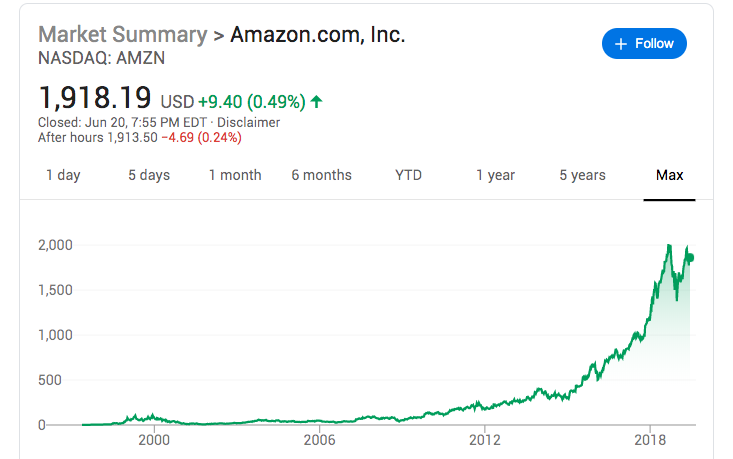
Besides, a key point of a company’s success is expanding its addressable market opportunity throughout the years. It can be achieved by implementing different services or products in new business segments as it has grown. Tesla and Amazon.com adopted this strategy, as well. Tesla was mainly founded to manufacture automotive products, but it has expanded its market opportunities throughout the years, and now it sells energy storage systems. As for Amazon.com, it began as a web retailer but now has a prosperous web services business.
“Optionality” is the company’s ability to enter nearby businesses, and it is a crucial factor that every growth investor should take into account when considering a potential growth investment.
2. Durable Competitive Advantage
One of the investment tenants of Warren Buffet is to purchase businesses with a strong competitive advantage, which he calls it the “moat” of a company. A company simply can preserve its competitive advantage over its competitors for an extended period, thereby protecting its profits from capitalism’s forces.
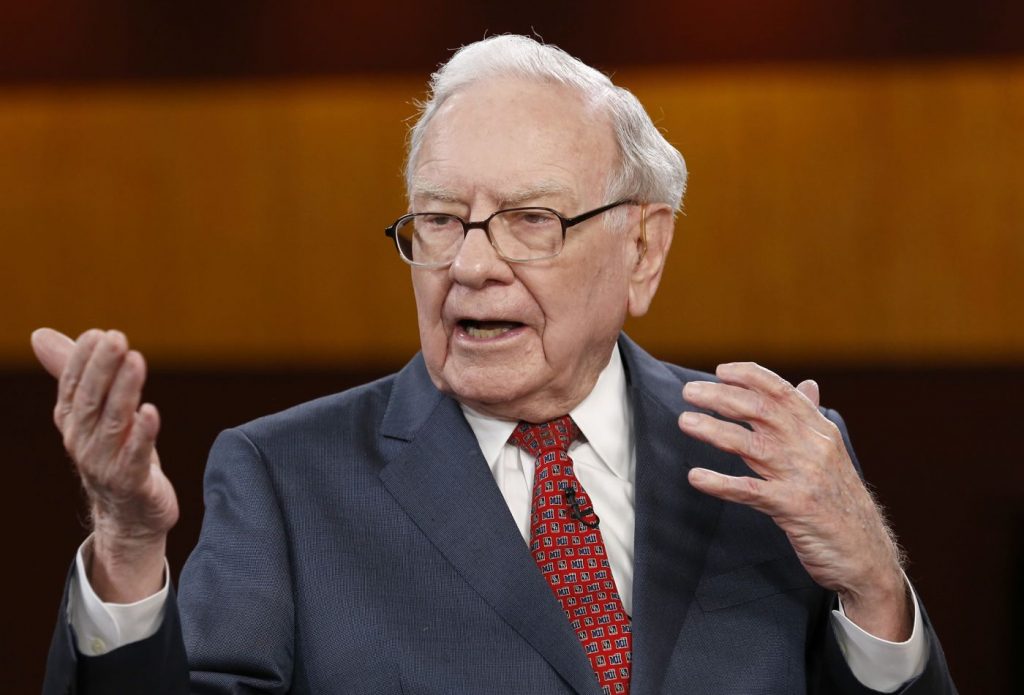
Also, there are four main types of competitive advantage:
- Intangible Assets: They are physical and measurable assets which are used in the operations of the company. These assets can be trade secrets, patents, and regulatory protection. Tiffany’s & Co is a great example. This company uses its brand name to convince the customers to pay more on its premium jewelry.
- High switching costs: If the switch to a competing product is expensive, customers tend to remain loyal to their current company even when there is a rise in the price. A great example of high switching costs is consumer banking.
- Low-cost producer: If a business enjoys scale, technological, or geographic advantage in which it can produce good product or service for a lower cost than its rivals, it can charge a lower price and still generate high revenues. Walmart is an excellent example of a low-cost producer; it has an efficient supply chain and enormous buying power to sell services and products with a much lower charge than its rivals.
- Network effect: If a new customer joins a network, an additional value is added for all the other members of the same network. For instance, the rise of social media can be linked to the network effect directly. The more users post media or links on a social media site, the more there is users’ appeal, and the more useful the platform is for the public.
When looking for your next big growth stocks, make sure to look for at least one of these competitive advantages. It will undoubtedly increase your chances of success and will yield great results and revenues.
3. Financial Resilience
When it comes to the economy, every company will face ups and downs throughout the years. Even blue chips can face hard times. That is why it is always better to favor growth companies that can fund the needs of their future growth with internally generated revenues rather than depending on functional financial markets.
Alternatively, it is recommended to avoid growth companies that are depending on a continuous stream of acquisitions or operating at a loss. When a company is operating at a loss, it will continuously have to tap shareholders for new capital to keep the doors open, which will certainly lead to high dilution level that will ultimately mute future revenues. The same situation goes for no-growth or slow business as well, which depend on acquisitions to post growth. The purchase of other companies directly can be expensive and often require the buyer to issue new shares or take debts to help with funding the deals.
These companies eventually rely on a factor beyond their control (a high stock price or functional capital markets) which may stop their growth if the economy sputters.
Pandora Media is an excellent example. Even though it has a fine brand name and has remarkably expanded its profits for many years, hundreds of millions of dollars are consistently lost annually. That’s what led the company to dilute shareholders with the offerings of secondary stock and tap the debt markets for new capital.
4. Business Model of Repeat Purchase
Attracting new customers to a company is difficult and costly. That’s why selling services or products to existing customers is far better for a business to make money instead of relying on a never-ending stream of new customers to increase its growth.
That’s why companies like Fitbit and GoPro were once top growth companies and now turned into losing investments. They both sell long-lasting electronic devices that negate the need to make a second purchase by the existing customers. As a result, these companies are in a constant need to drive more new customers to generate year-over-year growth. It was certainly possible before when they were small, but it is now getting more challenging with the expanding number of competitors and the saturation of the initial market niche.
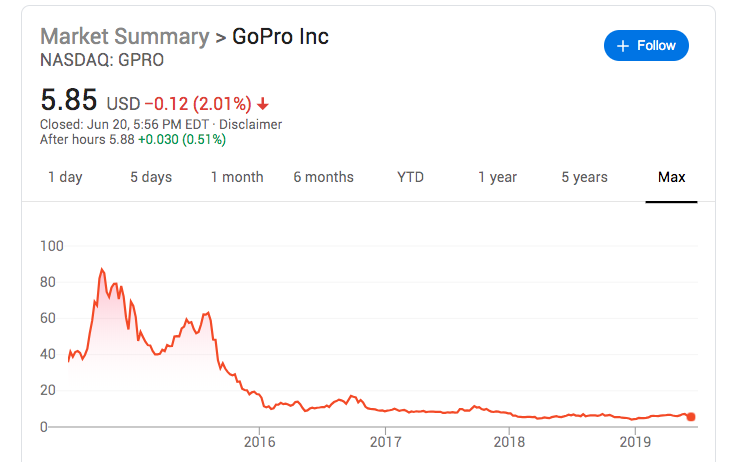
Alternatively, an exceptional example of the repeat purchase business model is Starbucks. People don’t just jump from one coffee shop to another. If they like a place or a brand, they stick with it for life. Knowing that Starbucks already has a huge fanbase and a growing following, it’s easy to see why existing customers won’t be replacing it any time soon.
5. Strong Appreciation of Past Price
You should look for companies which have strong earnings growth during at least the past ten years. Besides, the minimum EPS growth depends on the company’s size. For instance, you may look for a growth of 5% or more for businesses that are larger than $4 billion, 7% or more for companies in $400 million-$4 billion, and 12% or more for the ones under $400 million.
The fundamental idea is that winning corportaions are likely to keep on winning. So, you should start looking for companies that have already beaten the stock market.
6. Excellent Business Culture
Due to the fierce competition between the different companies of the same industry, every business is regularly looking for highly talented employees to secure its valuable position on the stock market and satisfy the needs of its customers. This business culture is very crucial and a key factor for every company’s success.
You can look for a review of a company’s employees with a simple search on the internet. Having a look at the different reviews will provide you with a better understanding of any company’s culture.
7. Talented Leadership
The final, yet the most important principle you should look for in a company is a dedicated and talented CEO who is sincerely committed to the mission of the company and is highly motivated to turn the business into a success.
You should look for potential leaders in the different business that will not only provide a better future for the company but also increase your chance of generating high revenue with growth investing.
There are various leaders (whether they are founders or co-founders) who succeeded in turning a small business into a blue chip — for instance, Jeff Bezos at Amazon.com, Mark Zuckerberg at Facebook, and Reed Hastings at Netflix.
Furthermore, you can look for any potential leader on the internet, and you can have a better understanding about his/her current status in a particular company, education, work experiences, and major achievements. Also, look for videos where he/she gives does a presentation about the company’s service and product.
Additionally, check the company’s inside ownership rate to know if they own a lot of stock personally and aren’t working to earn a pay package.
Does the leadership team have a significant role in the company? Or are they selling the growth stock as soon it vests? You can find the answers in the SEC filings (look for recent Form 4s and DEF-14A).
Final Thoughts on Growth Investing
A successful strategy for growth investing is a long-term play. Make sure to follow the different principles listed above and opt for companies with products or services that you genuinely believe in and be ready to hold them through the up and down cycles of the market.


Basic Investments That Every Entrepreneur Must Make
Starting a business usually involves many investment decisions. Like a great ocean liner, from the time of opening and through all stages of growth, constantly needs to review and stay the course. And for that, we share at least 7 key investments that every entrepreneur should do to take your business to success.
Invest in training for yourself. One of the most important characteristics of a good entrepreneur is to know the business and for that you must train you. There are many important issues that you manage to develop your business such as administration, finance and accounting, electronic commerce, sales and others. Make sure you always reinvest a percentage of your profits in better prepared, and of course this also applies to staff in all areas. Have you considered the possibility to improve your English? or how about something about How international trade?
Investing in a website. It is said that today’s businesses that are not on the internet is as nonexistent, and although I personally think a somewhat extreme statement, if you believe that the presence of a business on the web is important. The good news is that riding a page with basic information about your company or business does not require a lot of money because there are many free resources for it.

However if you need to pay a few hours to a technician who is familiar with the subject and help you to do the job. However it is long-term investments that will pay off attract customers not previously imagined.
Invest in quality staff. Depending on the size of your business partners will need eventually and will then be time to invest in human resources. It also says that large employers are always surrounded by people “smarter” than them. If you need a secretary, an engineer, a salesman or an assistant, make sure you invest in very intelligent people who do not grow your business and otherwise.
Invest in developing corporate vision. If your company has 100 employees, 15 employees and only 2 (you and your wife), also need a long-term. Why? because “he does not know where you want to reach, any road will take you.” The vision and mission of a company must be printed in the heart of its directors and employees. Occasionally hires a good motivator to help your organization maintain clear destiny, goals and business objectives. Motivation is the fuel that makes humans continues forward.
Investing in recognition. One of the major motivations of human beings is that our work is recognized. An employee who receives a token of appreciation for his work, probably work harder. Make a recognition culture in your organization by investing regularly (say every 2 or 3 months) in a program of recognition for the effort, values, and excellent results.
This is especially important for the sales force, production staff and in general for every employee that has to do with the scope of objectives.
Investing in growth. A safe and healthy company is one that meets two criteria: their debts are minimal and in control and that their profits are maintained and reflect a percentage of monthly growth. But this requires also invest in both. Be sure to use a percentage of monthly earnings to pay off debts as soon as possible and second, another percentage to reinvest in growth and development, whether machinery, equipment, infrastructure, etc..
It is said that the success of Japanese companies is their enormous capacity to reinvest the profits of the business to the point that barely receive a minimum wage for years until companies become corporate giants.
Investing in social assistance. One of the noblest purposes of free enterprise is to contribute to a better society. This through to jobs, providing products, provides solutions and lends a hand to provide the basic needs of their community. There is a secret key or difficult to explain the fact of helping others, but I can sum the resulting effect in one word: prosperity. To the extent that we schedule our endeavors to contribute to a better society, our businesses also improved.
As you can see the 7 investment tips are not directly related products, machinery or furniture, but most certainly represents a solid foundation for big business.



